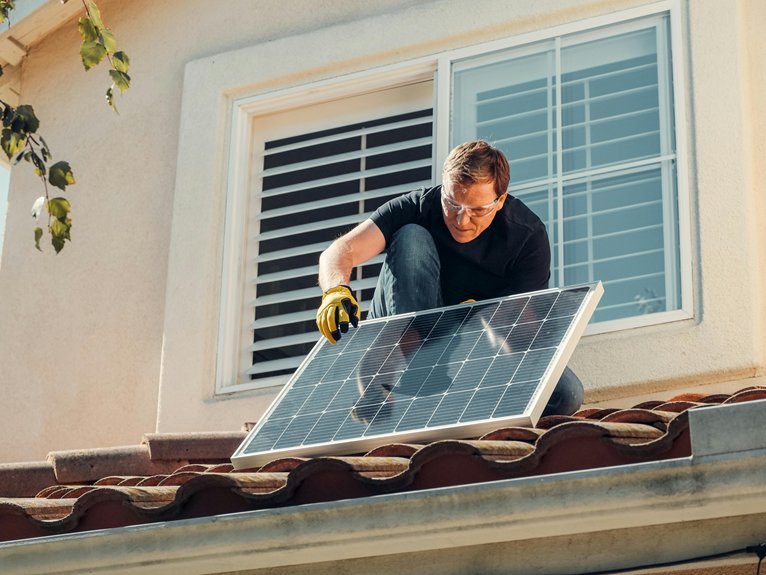Your new roof is a significant investment, and taking steps to extend its lifespan can save you money and trouble in the long run. Regular inspections, prompt repairs, and proper maintenance are essential, but knowing exactly what to focus on can be tricky. There are key practices that can help protect your roof from common issues and severe weather. Let’s explore what actions you can take to keep your roof in top shape for years to come.
Schedule Regular Inspections and Maintenance
Regular inspections and maintenance are essential for keeping your roof in top condition. You should schedule these at least twice a year, ideally in spring and fall, to catch issues early.
During inspections, look for damaged or missing shingles, cracked flashing, and signs of water leaks or mold. Address small problems immediately to prevent them from worsening.
Clean debris from your roof and gutters regularly, and maintain proper ventilation. Staying proactive with maintenance helps extend your roof’s lifespan and saves you money in the long run.
Consistent care ensures your roof remains durable, functional, and protective for years to come. For thorough assistance, consider scheduling a free inspection with roofing professionals to identify potential issues before they escalate.
Keep Gutters and Downspouts Clear
To prevent water damage and protect your roof’s integrity, it’s crucial to keep your gutters and downspouts clear of debris. Regularly remove leaves, twigs, and dirt that can clog the system, causing water to overflow and seep under your shingles.
Use a sturdy ladder and gloves for safety, and consider installing gutter guards for easier maintenance. Make certain downspouts direct water away from your foundation to prevent basement flooding and erosion.
Checking and cleaning your gutters at least twice a year, especially after storms, keeps water flowing smoothly. Keeping gutters clear is essential for preventing costly repairs and extending your roof’s lifespan.
Trim Overhanging Branches and Vegetation
Overhanging branches and nearby vegetation can pose significant risks to your roof’s health. They can scrape and damage shingles, especially during storms or high winds.
Falling leaves and twigs can clog gutters and trap moisture, leading to rot and moss growth. Overgrown branches also provide easy access for pests like squirrels and insects, which can cause further damage.
To protect your roof, regularly trim back any branches that hang over or near your roofline. Keep vegetation at a safe distance to prevent physical damage, reduce debris buildup, and improve airflow.
Staying proactive helps extend your roof’s lifespan and keeps it in better condition longer.
Address Repairs Promptly to Prevent Further Damage
Promptly addressing roof repairs is essential to prevent small issues from escalating into costly damage. When you notice a missing shingle, cracked tile, or minor leak, don’t delay repairs. Small problems can quickly worsen, leading to water infiltration, structural damage, or mold growth.
By acting promptly, you preserve the roof’s integrity and extend its lifespan. Regular inspections help you catch issues early, and hiring a professional ensures proper repairs.
Ensure Proper Ventilation and Insulation
Proper ventilation and insulation are crucial for maintaining your roof’s health, especially in extreme weather conditions. Good airflow helps regulate temperature and reduces moisture buildup, preventing mold and wood rot.
Proper insulation keeps your home energy-efficient and prevents heat from escaping in winter or entering during summer, which can cause roof materials to expand and contract prematurely. Make certain vents are unobstructed and insulation is adequately installed in the attic.
Regularly inspect these systems to identify issues early. When ventilation and insulation are working correctly, your roof lasts longer and performs better, protecting your home from costly repairs down the line.
Protect Your Roof From Severe Weather Conditions
Severe weather conditions such as heavy rain, hail, snow, and high winds can substantially damage your roof if you’re not prepared. To protect it, guarantee your roof has a sturdy, well-maintained structure.
Trim overhanging branches that can break and cause damage during storms. Install impact-resistant shingles to withstand hail.
Keep gutters clear to prevent water buildup and leaks. Consider adding storm collars around vents and chimneys for extra protection.
Regularly inspect your roof after storms for damage, and address issues promptly. Taking these precautions helps minimize weather-related harm, extending your roof’s lifespan and saving you money on repairs.
Conclusion
By staying on top of inspections, keeping gutters clear, trimming branches, and addressing repairs quickly, you can greatly extend your roof’s lifespan. Proper ventilation and insulation also play a key role in preventing damage from moisture. Protecting your roof from severe weather helps ensure it stays durable and in great shape for years to come. For more information on how to schedule your free roof inspection, call us at (405) 543-2920 or visit us online at Top View Roofing. With regular care and maintenance, you’ll enjoy a safe, long-lasting roof that keeps your home protected.

